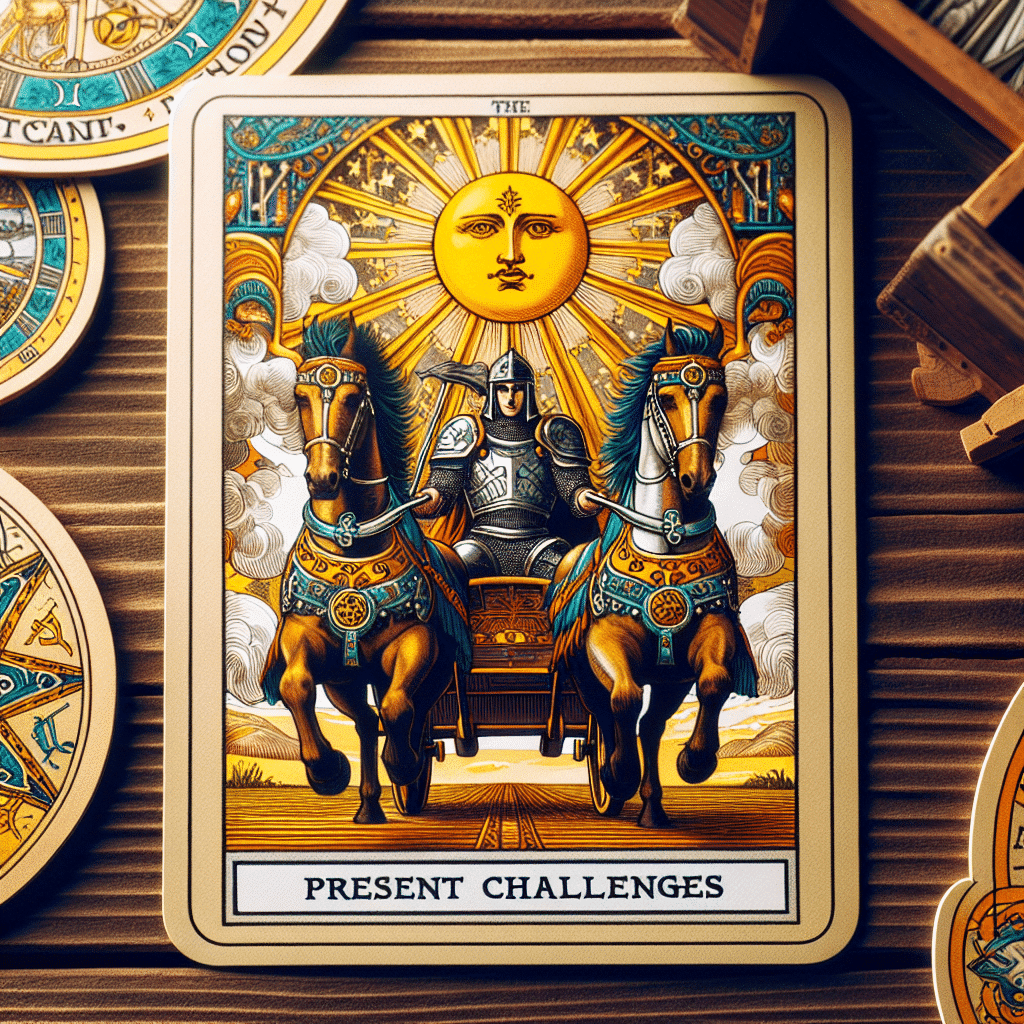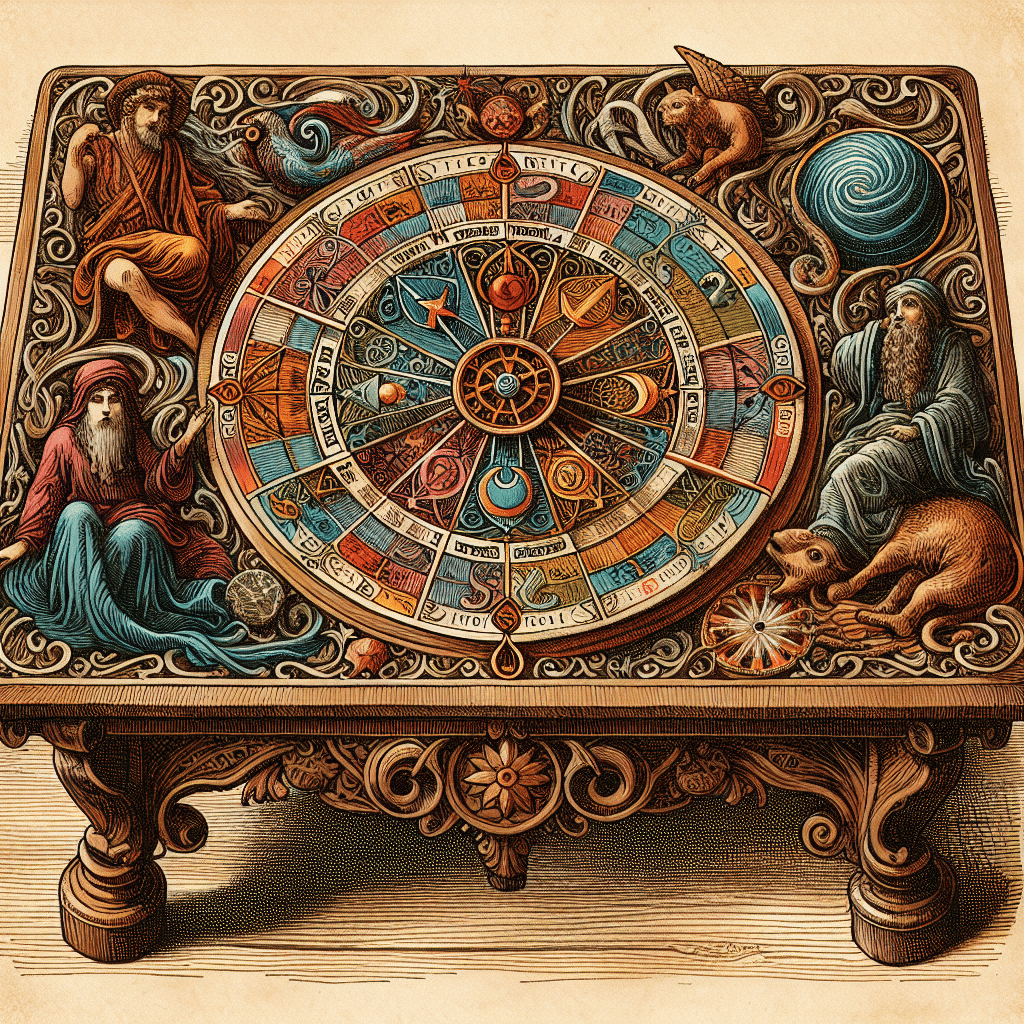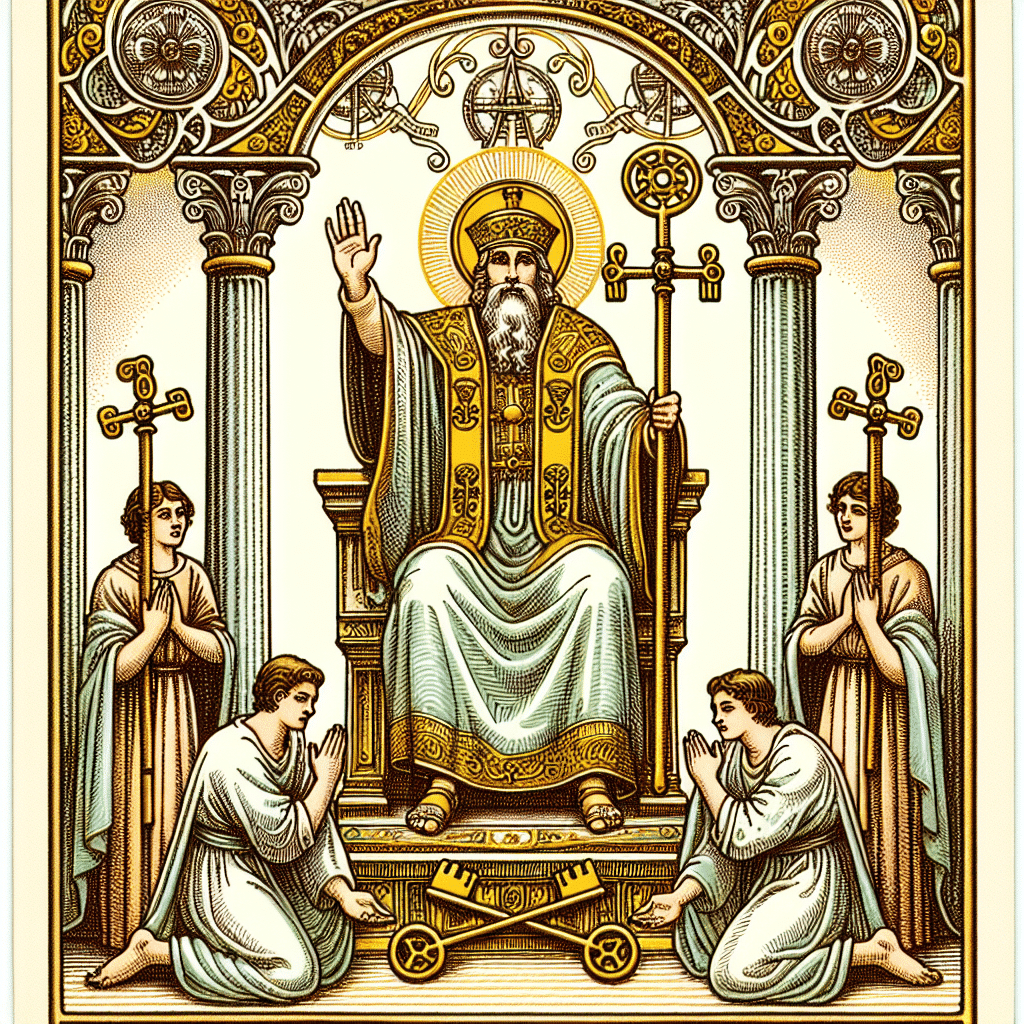
Welcome to the fascinating world of tarot cards, where each card carries deep symbolism and powerful meanings. In this article, we unravel the secrets of the Hierophant, one of the most intriguing cards in the tarot deck. From its symbolisms and interpretations to its variations and advising power, we delve into all aspects of this influential archetype.
In the following sections, we will explore the symbolism and meaning of the Hierophant, its variations in different tarot decks, and its ability to provide guidance and wisdom. Let’s embark on a journey of enlightenment and uncover the mysteries of the Hierophant.
Introduction to The Hierophant
The Hierophant, one of the major arcana cards in the tarot deck, holds significant meaning and symbolism. Often depicted as a wise spiritual figure, the Hierophant represents traditional values, institutions, and structures within society. This card is commonly associated with organized religion, education, and formalized belief systems.
Historically, the Hierophant archetype traces its roots back to ancient Greece, where the term “hierophant” referred to a religious official who interpreted sacred mysteries to the initiates. In the tarot, the Hierophant embodies both the roles of a spiritual teacher and a spiritual institution, offering guidance and imparting wisdom.
In tarot readings, drawing the Hierophant card suggests the presence of a mentor or a person of great authority in your life. This could be a spiritual teacher, a wise elder, or someone who upholds traditional values and principles. The Hierophant signifies the importance of seeking wisdom and guidance from those who possess knowledge in specific areas.
As a symbol of conformity, the Hierophant reminds us of the power of social structures and established norms. It represents the need for individuals to conform to societal expectations and the benefits that come from respecting and participating in communal traditions. However, it also serves as a reminder to strike a balance between conformity and individuality; to critically examine these structures and make conscious choices that align with personal values.
Contrary to the commonly held belief that the Hierophant solely embodies religious doctrines and conservative values, it actually represents a broader concept of wisdom and teaching. It encourages individuals to embark on a personal journey of self-discovery and spiritual growth, seeking knowledge from various sources and questioning inherited beliefs.
Understanding The Hierophant Symbolism
The Hierophant is rich in symbolism, each element contributing to its overall meaning. One prominent symbol is the keys that the Hierophant holds, representing access to hidden knowledge and spiritual insights. These keys suggest that the path to enlightenment and understanding lies within the teachings and guidance offered by this archetype.
Another significant symbol associated with the Hierophant is the throne upon which they are seated. The throne represents authority, power, and wisdom, indicating that the Hierophant possesses deep spiritual knowledge and is a source of guidance for others.
Religious symbols, such as crosses or other spiritual icons, often adorn the Hierophant card. These symbols serve as a reminder of the sacred nature of the teachings and traditions represented by the card. They emphasize the role of spirituality and faith in the journey towards enlightenment.
The two pillars flanking the Hierophant are symbolic of duality and balance. One pillar represents the physical world while the other represents the spiritual realm. The Hierophant stands between these pillars, serving as a bridge between the material and the divine, offering guidance that integrates both aspects of existence.
Moreover, the Hierophant’s vestments, which often resemble ceremonial robes, reinforce the card’s ties to institutionalized spirituality and traditional rituals. These robes signify the importance of rituals and ceremonies in connecting with the divine and seeking spiritual transcendence.
It is important to note that while some of these symbols may have overtly religious connotations, they can also be interpreted more broadly. The Hierophant’s symbols encourage us to explore our own spiritual beliefs, engage with diverse traditions, and find our own path towards wisdom and enlightenment.
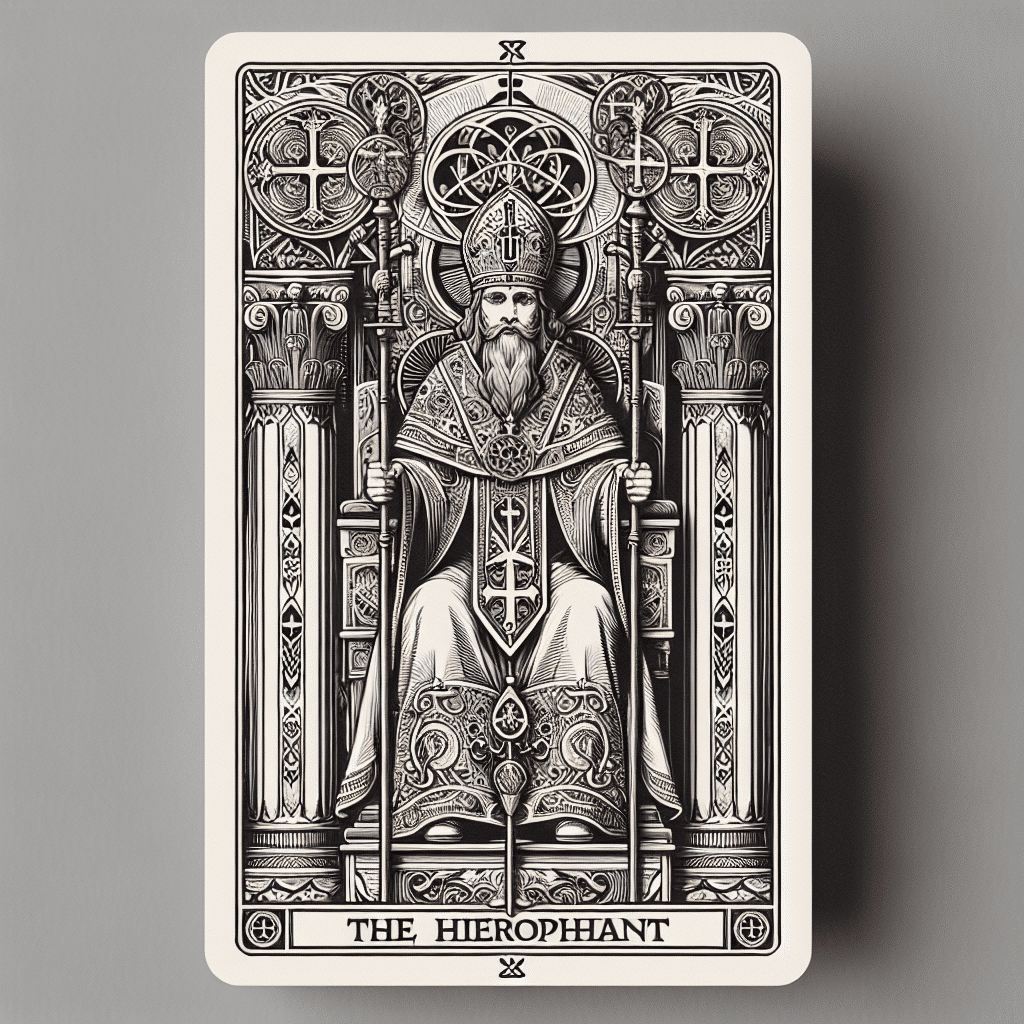
Key Meanings of The Hierophant
The Hierophant card carries a range of key meanings that can vary depending on the context of a tarot reading. At its core, the Hierophant represents wisdom, spirituality, and the search for higher knowledge.
One of the primary interpretations of the Hierophant is the importance of conforming to societal norms and established structures. It signifies the power and influence of traditional institutions, such as religion, education, and cultural customs. In tarot readings, the Hierophant often suggests the need to adhere to these systems in order to find stability, guidance, and acceptance within society.
Another key meaning associated with the Hierophant is education and learning. This card represents a teacher or mentor who possesses deep wisdom and can provide valuable lessons. Drawing this card can indicate the presence of a knowledgeable figure in your life, someone who can offer guidance and help you expand your understanding of the world.
The Hierophant also invokes themes of spirituality and seeking higher truths. It encourages individuals to explore their own spiritual beliefs, engage in introspection, and pursue a deeper connection with the divine. This card reminds us to be open to the teachings of various spiritual traditions and to embark on a personal quest for spiritual growth.
Moreover, the Hierophant embodies the concept of tradition and the wisdom passed down through generations. It represents the value of heritage, cultural customs, and ancestral knowledge. This card encourages individuals to honor their roots, respect ancestral wisdom, and learn from the collective experiences of those who came before.
Ultimately, the Hierophant challenges us to find a balance between following the wisdom of established traditions and developing our own spiritual autonomy. It teaches us that while conformity has its place, it is important to question, reflect, and make conscious choices that align with our own values and beliefs.
Variations on The Hierophant
The Hierophant card, like other tarot cards, can be depicted in various ways across different tarot decks. While the core symbolism and meanings remain consistent, the artistic interpretations of the Hierophant can offer unique perspectives and energies.
Classical tarot decks often portray the Hierophant as a religious authority figure, dressed in elaborate robes and holding sacred objects. These traditional representations emphasize the Hierophant’s connection to established religious institutions and the role of formalized spirituality in guiding individuals.
In contrast, modern tarot decks may reimagine the Hierophant archetype to reflect a broader range of belief systems and spiritual practices. These decks may incorporate symbols from different religions, blend cultural elements, or present the Hierophant as a more universal spiritual guide.
Artistic variations also play a significant role in the energy and interpretation of the Hierophant. Some decks may depict the Hierophant as approachable and compassionate, while others portray a more stern and authoritative figure. These variations can influence how we relate to the card and the qualities we associate with the Hierophant’s guidance.
It is worth noting that while the variations in artistic depictions may add nuances to the Hierophant card, the core essence and symbolism of the archetype remain intact. Whether depicted in a traditional or modern style, the Hierophant continues to represent wisdom, guidance, and the exploration of spiritual truths.
Exploring different tarot decks and their interpretations of the Hierophant can broaden our understanding of this archetype. It allows us to connect with the imagery that resonates most strongly with our own spiritual journey and personal beliefs. The diversity of artistic representations enables us to find a deck that speaks to us on a deeper level.
Advising Power of The Hierophant
The Hierophant offers valuable guidance and insights that can be applied to various aspects of our lives. By understanding the advising power of this archetype, we can make mindful decisions and navigate challenges more effectively.
One of the key messages from the Hierophant is the importance of seeking wisdom from those who have more experience or knowledge in specific areas. This can involve finding mentors or seeking guidance from respected individuals who can offer valuable insights and help us navigate complex situations.
The Hierophant also encourages us to draw upon established structures and traditions that have stood the test of time. By utilizing these foundations, we can benefit from the wisdom and lessons of those who have come before us. This doesn’t mean blindly following tradition, but rather understanding the value in respecting and integrating these teachings into our lives.
However, it is equally important to strike a balance between conformity and individuality when receiving advice from the Hierophant. While societal expectations and norms can provide valuable guidance, it is essential to assess whether they align with our own values and beliefs. The Hierophant prompts us to critically evaluate the advice we receive and make choices that resonate with our authentic selves.
Furthermore, the advising power of the Hierophant lies in the invitation to continue seeking knowledge and expanding our understanding of the world. This involves exploring different spiritual traditions, engaging in self-reflection, and pursuing personal growth. The Hierophant urges us to never cease learning and to approach life with a curious and open mind.
In times of uncertainty or when facing significant decisions, the Hierophant can provide a crucial source of guidance. Drawing this card reminds us to consider the wisdom of tradition, seek guidance from trusted sources, and trust our own instincts. The Hierophant empowers us to navigate life’s complexities with greater clarity and confidence.
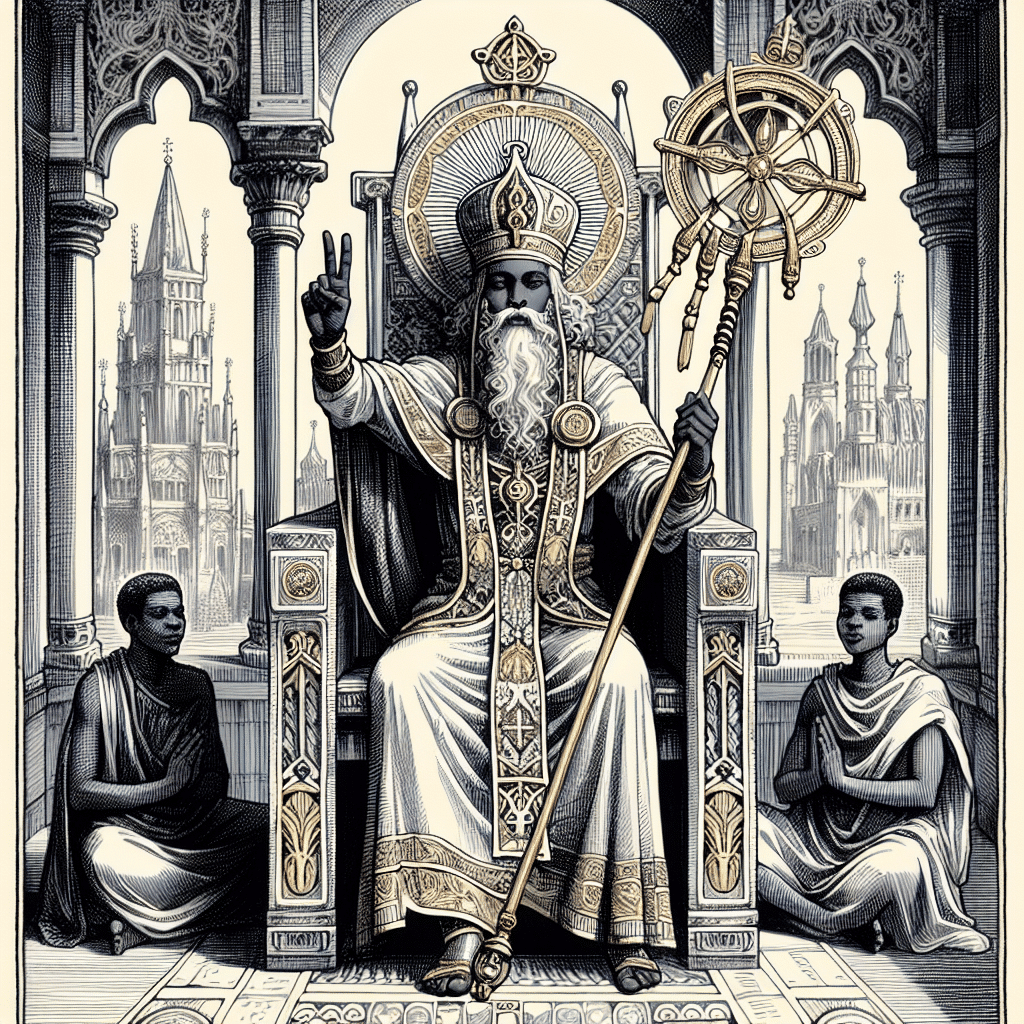
Conclusion
The Hierophant, with its rich symbolism and profound meanings, holds a significant place in the tarot deck. It serves as a reminder of the importance of seeking wisdom, guidance, and spirituality in our lives. Whether we interpret the Hierophant as a symbol of tradition, a mentor figure, or a connection to divine knowledge, its advising power remains invaluable.
As we explore the Hierophant’s teachings, we learn to navigate the delicate balance between conforming to societal expectations and forging our own unique path. By embracing the wisdom of established structures and integrating it with our personal beliefs, we can find harmony and enlightenment.
Remember, the Hierophant represents not just religious doctrines, but also the broader concept of wisdom and teaching. It encourages us to continuously seek knowledge, respect tradition, and make conscious choices that align with our individual values. Allow the Hierophant to guide you on your journey of self-discovery, spirituality, and personal growth.
May the wisdom of the Hierophant inspire you to embrace the power of tradition, seek guidance from trusted sources, and embark on a lifelong quest for knowledge and enlightenment.

